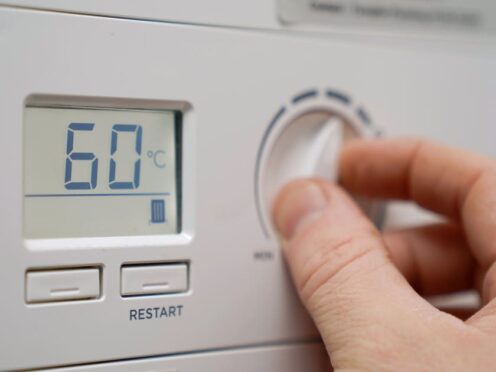
Scottish ministers have been told they need to “massively accelerate” the move to more environmentally friendly heating systems – as well as finding a “sensible” funding model to help households move away from using oil and gas boilers.
While currently only about 5,000 homes a year fit devices such as heat pumps, a report from the think tank IPPR Scotland says this needs to be ramped up to well over 100,000 properties a year by 2030.
The report, prepared along with the Scottish Federation of Housing Associations and environmental campaigns at Oxfam Scotland, insists that installing “clean heating systems” – such as air-source heat pumps, district heating connections and electric storage heaters – in all homes is “the only way to achieve emissions reductions on the scale demanded by the 2045 net zero target”.
But it added: “Retrofitting all homes by 2045 needs a massive acceleration from fewer than 10,000 clean heat retrofits per year to over 100,000.”
With the report saying helping households to make the change could cost from £650-750 million to £1.3 billion to £1.7 billion a year, depending on the levels of support offered, report author Dave Hawkey of IPPR Scotland said there needed to be a “sensible, long-term and fair funding model”.
Stressing that the transition to less polluting heating systems was an “unprecedented project for Scotland”, the report was clear there should be a “just transition” where “those with the broadest shoulders should contribute more”.
It raised the possibility of ministers using devolved income tax power to fund the change, putting a new Just Transition Supplement on to existing rates.
This would mean the contributions paid by Scots would be “progressively rising across tax bands”.

Grants should be made available to fully fund the costs of installing new heating systems for low-income families, IPPR suggested.
It also insisted that support for people in council and housing association homes should match that provided to owner-occupiers and private renters.
Mr Hawkey, a senior research fellow at IPPR Scotland, said: “Everyone, be they homeowners or renters, rich or poor, deserves a warm home in a future without fossil fuel boilers.
“But time is running out. If we don’t drastically increase our installation rates for clean heat and energy efficiency, we will miss our net-zero targets.”
However, with “people are understandably worried by the cost”, he said the report was “proposing a sensible, long-term and fair funding model for the Government to use so we can get rid of 20th century gas and oil boilers and get in 21st century clean heat like heat pumps”.
Lewis Ryder-Jones, advocacy adviser at Oxfam Scotland, said that meeting the country’s legally binding emission reduction targets would require “significant new action, including fundamentally changing the way we heat and insulate our homes”.
He added: “That will only happen at scale and speed if the way it is paid for is fair and protects those on the lowest incomes.
“Those with more money, who on average also pollute more, should pay more.”
Meanwhile, Sally Thomas, chief executive at the Scottish Federation of Housing Associations (SFHA), said: “Social homes are already the most energy-efficient of any in Scotland, with housing associations leading the way in the transition to a cleaner, greener future.
“Housing associations are fully committed to reducing carbon emissions and playing a leading role in helping Scotland meet its net-zero commitments. However, that transition must be a fair one, not where tenants pay the price.
“That’s why, as this important report shows, the Scottish Government must commit to a long-term funding plan that will support housing associations in meeting the costs of delivering clean, green affordable homes.”
A Scottish Government spokesperson said: “We recognise the need to increase the pace and scale of the move to clean heat so that we tackle climate change and ensure everyone in Scotland has a warm, affordable home to live in.
“We also understand the level of support required to help people with that transition, especially during a cost of living crisis. That’s why the Scottish Government has already committed significant funding to this work, and we will continue to do so.
“We have committed £1.8 billion during the course of this Parliament to support this transition. Scotland has the most generous package of grants and loans in the UK, which are available for households who are seeking to move to clean heating.
“But the investment to decarbonise heat must come from many sources, not just the Government. That’s why we formed an expert Green Heat Finance Taskforce which has been working on new ways to finance this work, and to stimulate investment in skills, innovation and the supply chain. Its first report concluded that there is a huge appetite to fund climate-friendly heating and better-insulated homes in Scotland, and that creates an opportunity for many well paid jobs in the sector.”
“Our current proposals for a Heat in Buildings Bill would see Scotland on the most ambitious path within the UK, with a roll-out of clean heating systems at a scale and pace very much faster than at present.”

Enjoy the convenience of having The Sunday Post delivered as a digital ePaper straight to your smartphone, tablet or computer.
Subscribe for only £5.49 a month and enjoy all the benefits of the printed paper as a digital replica.
Subscribe